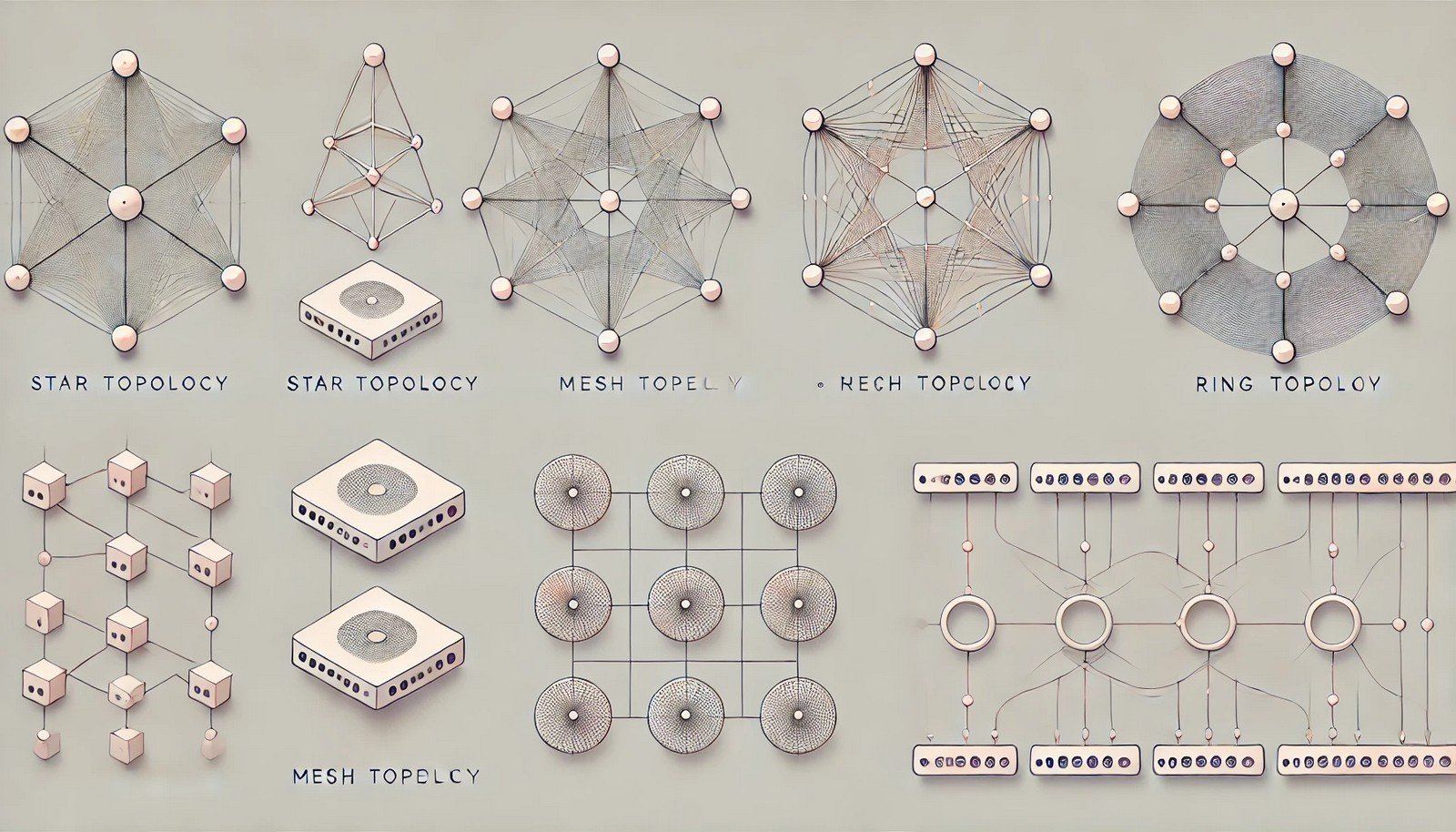Network Topology
 (Representational Image | Source: Dall-E)
(Representational Image | Source: Dall-E)
Quick Navigation:
- Network Topology Definition
- Network Topology Explained Easy
- Network Topology Origin
- Network Topology Etymology
- Network Topology Usage Trends
- Network Topology Usage
- Network Topology Examples in Context
- Network Topology FAQ
- Network Topology Related Words
Network Topology Definition
Network topology refers to the arrangement of various elements (links, nodes, etc.) in a computer network. It defines how devices like computers, routers, and switches are interconnected and how they communicate with each other. There are several types of network topologies, such as star, ring, mesh, and bus. Each has its own unique features, advantages, and disadvantages, making them suitable for different network environments. A well-designed network topology ensures efficient data transfer and system reliability.
Network Topology Explained Easy
Imagine a network as a group of friends who send messages to each other. Depending on how they are seated, the message might go directly from one friend to another or pass through several friends. Network topology is the way computers are “seated” in a network and how they pass messages to each other.
Network Topology Origin
The concept of network topology originated with the early development of computer networks in the mid-20th century. As network designs evolved, different topologies were tested to optimize communication. Topologies became more structured with the introduction of Local Area Networks (LANs) in the 1970s.
Network Topology Etymology
The word "topology" comes from the Greek words “topos” meaning “place” and “logos” meaning “study.” In computer networking, it signifies the study of the arrangement and structure of network connections.
Network Topology Usage Trends
With the rise of cloud computing, IoT (Internet of Things), and large-scale data centers, network topology has become more crucial than ever. Modern network topologies are designed to handle high-speed data traffic and ensure scalability. In particular, hybrid and mesh topologies have gained popularity due to their flexibility and fault tolerance.
Network Topology Usage
- Formal/Technical Tagging:
- Network Design
- Data Communication
- Systems Architecture - Typical Collocations:
- "star topology"
- "mesh network topology"
- "network architecture design"
- "bus topology configuration"
Network Topology Examples in Context
- In a star topology, all devices are connected to a central switch, making it easy to manage and troubleshoot.
- Mesh topology is often used in mission-critical networks due to its fault tolerance and redundancy.
- Ring topology is commonly seen in older network implementations where each device connects to two others, forming a circle.
Network Topology FAQ
- What is network topology?
Network topology is the arrangement of devices and connections in a computer network. - What are the main types of network topology?
Common types include star, bus, ring, mesh, and hybrid topologies. - Which topology is most commonly used today?
Star topology is widely used because of its simplicity and easy maintenance. - What is a mesh network?
A mesh network connects devices in a way that each can communicate with multiple others, offering redundancy and reliability. - Why is network topology important?
It helps determine the network’s performance, scalability, and reliability. - Can network topology affect speed?
Yes, an efficient topology can improve data transfer speeds and reduce latency. - What is the difference between physical and logical topology?
Physical topology refers to the actual layout of cables and devices, while logical topology shows how data flows in the network. - Is a ring topology still used?
It is rare today but can be found in some industrial networks. - What is a hybrid topology?
Hybrid topology combines two or more different topologies to leverage their strengths. - What role does topology play in data centers?
It helps optimize performance, reduce latency, and ensure redundancy in large-scale data centers.
Network Topology Related Words
- Categories/Topics:
- Computer Networking
- Systems Engineering
- Network Architecture
Did you know?
A mesh network was crucial for disaster recovery efforts after Hurricane Katrina. The redundancy and fault tolerance of this topology allowed communication to be restored quickly in affected areas.
PicDictionary.com is an online dictionary in pictures. If you have questions or suggestions, please reach out to us on WhatsApp or Twitter.Authors | Arjun Vishnu | @ArjunAndVishnu

I am Vishnu. I like AI, Linux, Single Board Computers, and Cloud Computing. I create the web & video content, and I also write for popular websites.
My younger brother, Arjun handles image & video editing. Together, we run a YouTube Channel that's focused on reviewing gadgets and explaining technology.



Comments powered by CComment